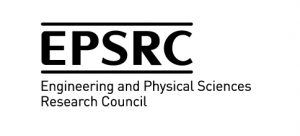Overview of Research for the first Ultrax project
The aim of this project in the Ultrax research stream was to develop technology to turn ultrasound into a cost-effective tongue imaging device to provide real-time visual feedback of tongue movements.
The project to comprised two main complementary research tracks:
- One to develop the core technologies
- One to test and evaluate the system in a clinical setting
Developing new technology (track 1)
Most current interventions for SSDs rely heavily on auditory skills; clients must listen to their own sounds and try to modify them. However, with Ultrax people with SSDs were actually be able to see the movements of their own tongues and use this as a guide to changing their speech.

It is already possible to capture tongue movements by placing a standard medical ultrasound probe under the chin. Ultrasound provides powerful information about atypical speech to enable speakers to modify their own incorrect articulations. However, the image is grainy, information (especially about the tongue tip) is often lost and the image is difficult to interpret. We improved this image by exploiting prior knowledge about the range of possible tongue shapes and movements in order to provide valuable constraints in tracking tongue contours in sequences of ultrasound images.
The heart of our approach was to exploit a statistical “tongue model”, making use of explicit sequence-based optimization for dynamic tracking and smoothing through time. We use this technology to enhance the ultrasound images, transforming them into a dynamic, real-time 2D video of the tongue’s movements.
Clinical development and evaluation (track 2)
Ultrax was used to provide bio-feedback therapy for people with SSDs and to provide a means for objectively assessing progress by comparing tongue shapes before and after therapy.
We will collected a large database of ultrasound and MRI images of tongue movements from 12 adults (ultrasound and MRI) and 60 primary school children (ultrasound) on which to base the model of tongue contours and to test its performance.
We also successfully trialled ultrasound therapy with 9 children with SSDs enabling us to evaluate practical issues arising during therapy and pave the way for a future large-scale clinical trial.

